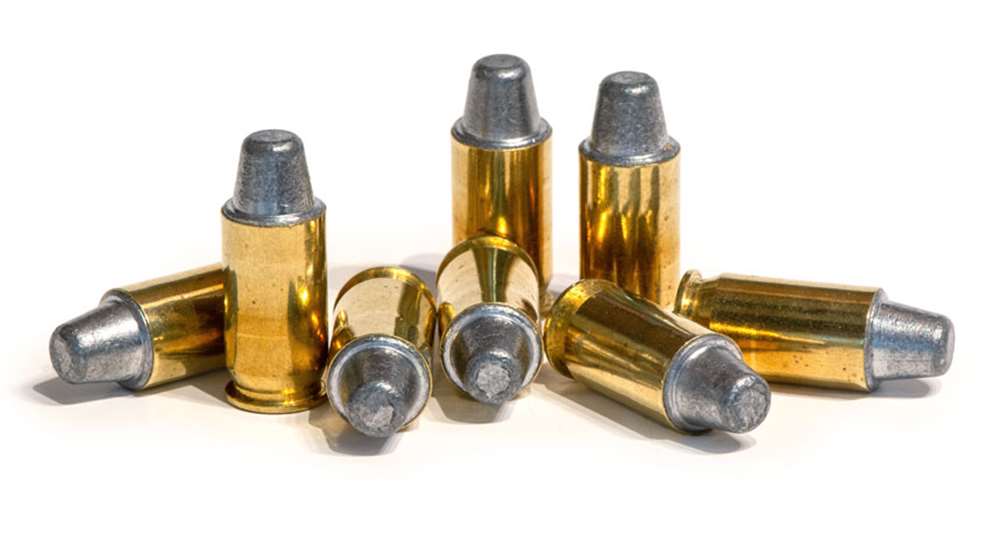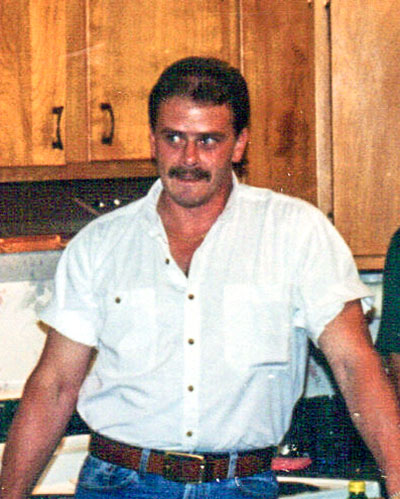
The author’s favorite load for .45 ACP consists of 4.3 grains of Clays with a 200-grain, lead SWC bullet.
Shooters used to trade handload data like cooks traded casserole recipes. Yeah, I know, that kind of sounds like an odd thing to do, but you have to remember there was actually a time before the internet. Back in the day you had to buy a handloading manual, or you had to ask another handloader for their often-secret recipe to find the load data you needed. Today you can find just about any handloading recipe you want online. The Hodgdon and Western Powders websites list thousands of loads.

Some handload recipes have become so iconic that being able to recite them from memory was once akin to a secret handshake. If you did not know Elmer Keith’s famous .44 Mag. load, which was 22.5 grains of Accurate #2400 behind a 250-grain hardcast bullet, you had to sit on the Group W Bench at the local gun club. (If you are not familiar with the Group W Bench, shame on you, you’ll need to put your Google-fu to work.) Similarly, riflemen memorized Jack O’Connor’s pet .270 Win. load, 49.5 grains of 4064 behind a 130-grain bullet. If you didn’t have this load committed to memory, you were not allowed around the fire at some hunting camps.
I’ve never been one to remember handloads. Always a stickler for exactness, I tend to write down the things I needed to remember. And, a good handload is always a bit more than just a powder and bullet combination; there are considerations for the primer, case and overall length. On many occasions I’ve had folks ask me about my favorite load for this or that cartridge and my answer, with one exception, is always the same, “I’ll have to check my notes and get back to you.” I’m sure this has made some wonder about the validity of my reloading prowess. The thing is, I handload for more than 50 cartridges, and that’s a lot of data to remember.
There is only one handload I know by heart and will never forget. Back when I first pinned on a badge, I became active in shooting combat-style pistol matches. I also picked up a near-mint, 1950’s-era Colt Lightweight Commander and sent it off to Novak’s for customization. During the process, I became acquainted with Joe Bonar, Novak’s lead 1911 pistolsmith at that time. For some reason, Bonar and I hit it off. He would frequently come south to Princeton, WV, to shoot in the Fraternal Order of Police pistol matches I ran, and my wife and I would travel north to shoot with Bonar and Ken Hackathorn at the Fort Harmer Rifle Club in Ohio.
A good handload is always a bit more than just a powder and bullet combination; there are considerations for the primer, case and overall length.
Bonar was an excellent pistol shot, and he taught me a lot about handgun shooting. His firearms always worked—and always seemed to be more accurate than mine. Given that he built my guns, I asked him why his pistols always seemed to shoot better. Bonar said it was the ammunition. He handloaded his own ammunition, and his favorite load for the .45 ACP was 4.5 grains of Hodgdon Clays behind a 200-grain, lead semi-wadcutter (SWC) bullet.
Now, if you look up a 200-grain load for Hodgdon Clays on the Hodgdon website, it will tell you the maximum load is 4.3 grains with a muzzle velocity of about 888 fps. Bonar’s 4.5-grain load was almost 5 percent more than the published maximum, and most savvy handloaders would tell you it was living in unsafe territory. Essentially, Joe’s load was a +P or maybe even +P+ .45 ACP load. What were the pressures? Was it safe? I have no idea.
Bonar was always a guy who seemed to ride the edge of the knife, and his reasoning for the 4.5-grain load was that he wanted to be guaranteed everything he shot would make the Major Power Factor for competition, which at the time was 170. To do that with a 200-grain bullet, the muzzle velocity has to be 850 fps or more. Power Factor is calculated by multiplying the bullet weight by the velocity and then dividing by 1,000. The reason it was so important was because C- and D-zone hits within the Major Power Factor classification are worth one extra point than they are with a Minor Power Factor such as a 9 mm.
I was a bit leery to exceed data recommended by Hodgdon, so I went with the company’s maximum suggestion of a 4.3-grain load and found I could always surpass the 850 fps mark out of my 5-inch 1911. So, I never tried Joe’s load. But I will tell you this: 4.3-grains of Clays behind a good 200-grain SWC bullet has proven to be the best .45 ACP target load I’ve ever fired. I used it to win lots of matches, place in the West Virginia Governor’s 20 and even once fired a 4-inch, six-shot group, offhand at 50 yards. Hell, I still have the target from 1995.
Granted, this Power Factor concept hails back to a time when stopping power was looked at differently and was mostly a momentum-based concept. Today, Power Factor numbers are calculated a bit differently and are based on the class in which you’re shooting and the governing body of the match. In IDPA matches, for instance, a Power Factor of 165 makes Major classification, and a 200-grain bullet only needs 825 fps to reach that threshold.
Unfortunately, Bonar was killed in a car accident in 2003. I lost a great friend and shooting companion, and the world lost one of its best 1911 pistolsmiths. I still have one of the guns he built for me, and it’s almost impossible for me to pick it up (or any other 1911) and not think of him—and his handload. My friend will never be as famous as Keith or O’Connor, but his .45 ACP load is the only handload I remember by heart. I just reduced it by .2-grains and suggest you wisely do the same.





































